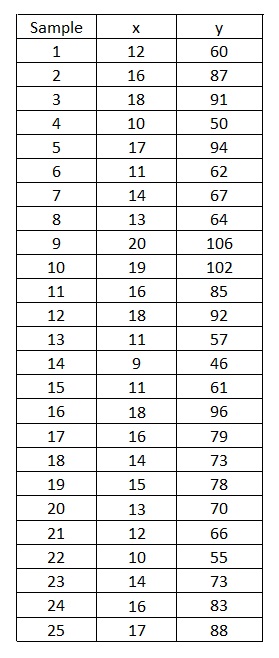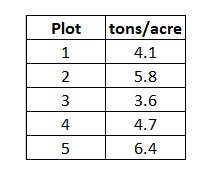NR 421 – Assignment #6
Double Sampling and Regression Estimation
Objective: This assignment will ask you to contrast the use of ratio and regression estimation as techniques for combining samples in double sampling of natural resources. You will begin to show a mastery of double sampling theory and calculations.
Student Learning Outcomes: Upon completing this assignment you should be able to:
- Describe the theory between picking a data combination technique and put it to practice.
- Apply double sampling to estimate a population parameter using regression estimation.
- Show a mastery in understanding how sampling unit, population variability, and sampling intensity interrelate.
1. What are the three approaches for recombining data in double sampling? What assumptions must be met in order to utilize each of them?
2. How do we determine which double sampling recombination technique to use?
3. By looking at the given x, y subsample data pairs, determine if either ratio estimation, regression estimation, difference estimation, or all of them can be used in estimating the y variable population total. Remember to look at the requirements for using each of these techniques and justify your answers based on these requirements.

4. For the given dataset of 1 m2 forage estimates (kg/m2) calculate the regression gradient (b) between the 2014 and 2016 estimates and determine if regression estimation is appropriate for estimating the 2016 (y value) population average (Mg/hectare).
5. From question #4, use regression correction to calculate the 2016 population average forage and variance (Mg/hectare) assuming the population is 32 hectares.
6. Calculate the 90% confidence interval of the 2016 average forage (Mg/hectare) and write a statement about your confidence in the estimate.

7. Explain what we would expect to happen to our sample variance if we change from sampling a population with 23 – 10 m2 plots to using 23 – 20 m2 Be specific.
8. From the given preliminary data of course woody fuel loading on 1/10th acre circular plots, calculate how many plots are needed to determine the fuel loading to within 12% at a 95% confidence level. Assuming the site is 31 acres.

9. Describe what we would expect to happen to our variance structure and necessary sample size if the plots in question 8 had been thin rectangular 1/10th acre plots.
